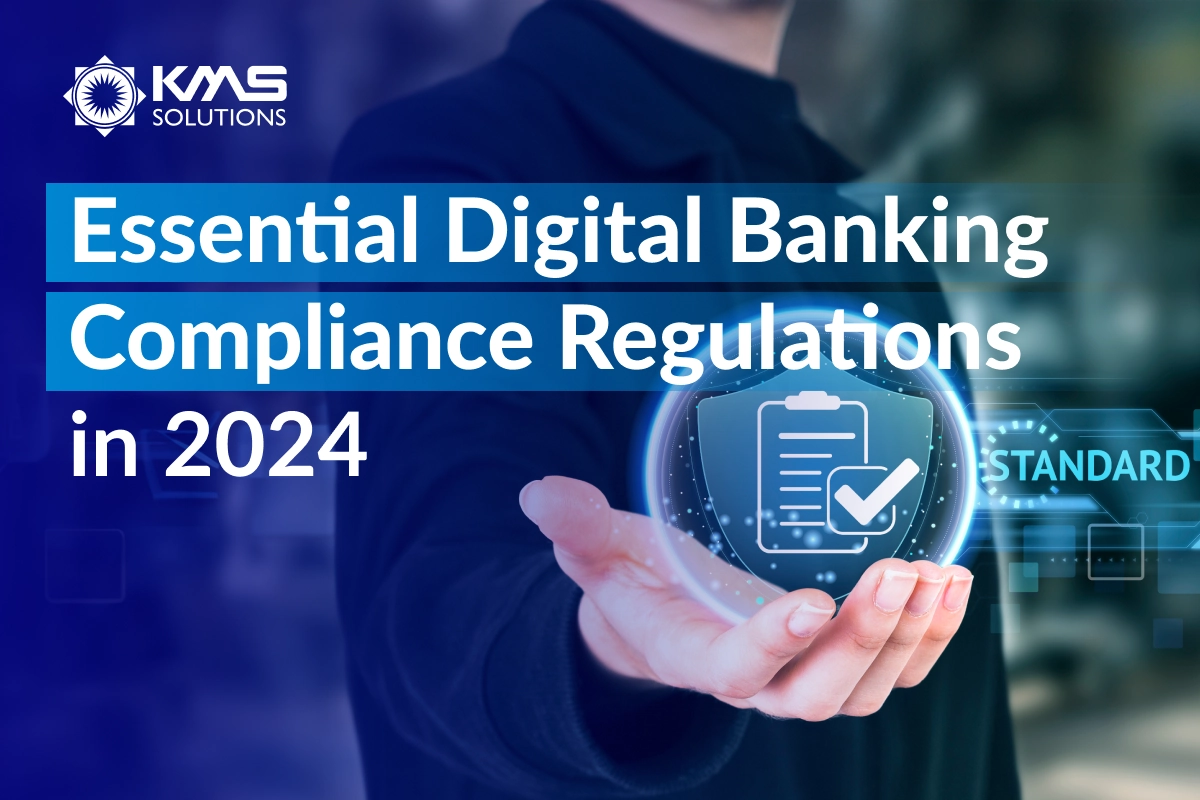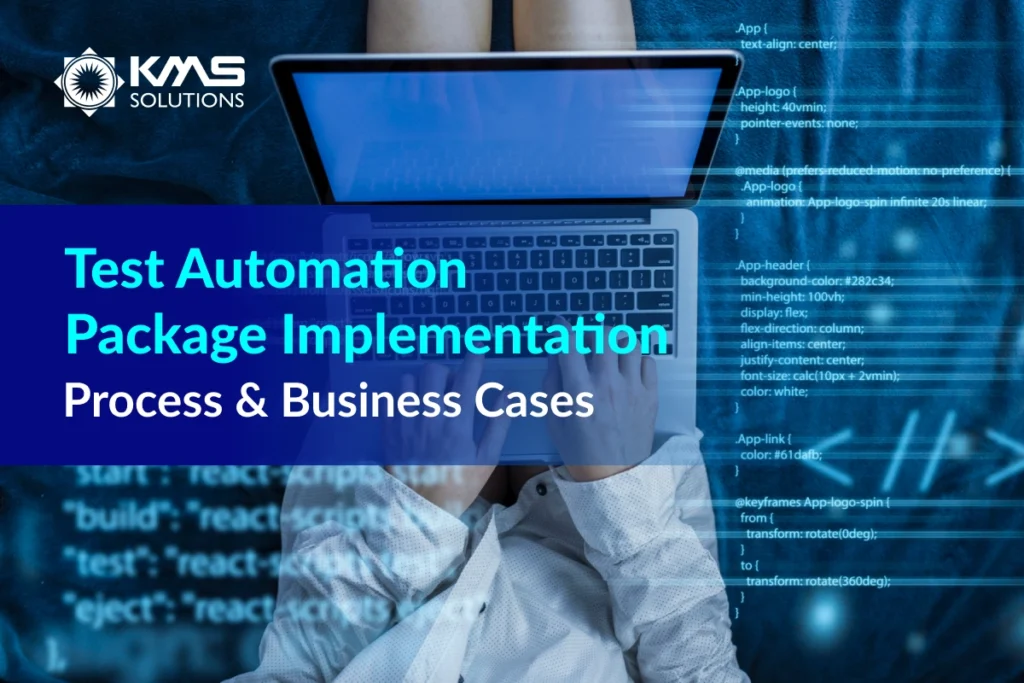Complying with a complex and continuously evolving regulatory landscape in the BFSI industry is an elusive goal for many banks. Financial institutions that have successfully integrated mobile applications face an even greater array of regulations to adhere to. Although the cost of complying with mobile banking regulations is substantial, the consequences of non-compliance include reputational harm, financial and legal losses, and perhaps increased technical debt.
To help banks stay informed and proactive in their compliance efforts, this article discusses the latest mobile banking compliance requirements and strategies to ensure adherence to all relevant standards.
Mobile Banking Compliance Regulations Checklist
Policymakers and regulators continue to emphasise strengthening cybersecurity, improving digital identities and online authentication, and protecting consumers as they transition to digital payments and currencies. Below are some of the most recent mobile banking compliance regulations that financial institutions should pay attention to in 2024:
1. Know Your Customer (KYC)
KYC regulations are essential components of the financial regulatory landscape, aiming at preventing money laundering, terrorist financing, and other illegal activities.
For Australian banks, adhering to these regulatory frameworks is crucial to maintaining compliance, ensuring the integrity of financial transactions, and safeguarding the financial system.
- Customer Identification Program (CIP): Requires banks to collect and verify customers’ personal information before opening an account, such as name, date of birth, address, and identification numbers.
- Customer Due Diligence (CDD): This involves assessing the risk associated with each customer based on their identity, financial activities, and source of funds. Banks categorize customers into different risk levels and apply appropriate monitoring measures accordingly.
- Enhanced Due Diligence (EDD): This banking regulation is required for high-risk customers, involving more comprehensive scrutiny, such as obtaining additional information about the customer’s source of funds and wealth.
- Ongoing Monitoring: Continuous monitoring of customer transactions to detect suspicious activities. This includes regular reviews of customer information and risk assessments.
- Electronic Know Your Customer (e-KYC): leverages digital tools to verify customer identities electronically, using methods like biometric authentication (e.g., facial recognition, fingerprint scanning), digital signatures, and electronic document verification.
How KMS Solutions Comply with These Regulations?
- KMS Solutions ensures compliance with e-KYC regulations through a robust and comprehensive approach. Our compliance strategy integrates advanced technologies and stringent security measures to ensure that financial institutions can verify and authenticate their customers efficiently and securely.
2. Anti-Money Laundering (AML) Compliance
AML regulations require banks to implement procedures to detect and prevent money laundering activities. This includes customer due diligence, transaction monitoring, and reporting suspicious activities to relevant authorities.
- Anti-Money Laundering and Counter-Terrorism Financing Act 2006 (AML/CTF Act): This foundational legislation mandates the implementation of measures to detect and prevent money laundering and terrorism financing. It requires financial institutions to establish AML/CTF programs, conduct customer due diligence, and report suspicious matters.
- Australian Transaction Reports and Analysis Centre (AUSTRAC): AUSTRAC is the primary regulatory body responsible for overseeing AML compliance in Australia. It provides guidance, monitors compliance, and takes enforcement actions against non-compliant entities.
- Training Programs: Regularly training employees on AML regulations, emerging threats, and best practices to ensure they can identify and report suspicious activities effectively.
3. Data Privacy and Protection
Banks must ensure that personal and sensitive information is handled responsibly, securely, and in accordance with legal requirements. This framework not only protects customers but also builds trust and enhances the reputation of financial institutions.
- Data Protection Policies: Enforce detailed policies that specify the procedures for collecting, storing, and sharing customer data.
- GDPR Compliance: This involves understanding and implementing GDPR’s key principles and complying with the data subjects’ rights, including the right to access, rectify, and erase their personal data, as well as the right to data portability.
- Data Encryption: Ensuring personal data is encrypted in transit and at rest to protect it from unauthorised access and breaches.
- The Payment Card Industry Data Security Standard (PCI DSS): This set of security standards is crucial for protecting cardholder data during transactions. Australian banks must ensure their mobile banking platforms are compliant with PCI DSS to mitigate risks associated with data breaches and fraud.
How KMS Solutions Comply with These Regulations?
- Our experts comply with the Payment Card Industry Data Security Standard (PCI DSS) and hold Certified Banking Domain Professional (CBDP) credentials, offering trusted digital banking systems.
4. Consumer Protection
Australian banks are subject to a comprehensive set of regulations and guidelines designed to protect consumers from unfair practices and enhance trust in the banking system.
- The Consumer Data Right (CDR): The CDR, also known as Open Banking, empowers consumers to securely share their banking data with accredited third parties. Banks must comply with CDR requirements by implementing robust data security measures and ensuring transparent data handling practices.
- The Payment Services Directive (PSD2): This framework is aimed at enhancing payment services, increasing competition, and improving customer protection within the European Economic Area (EEA). Moreover, PSD2 mandates that banks provide secure access to customer accounts to third-party payment service providers (TPPs) with customer consent.
5. Cybersecurity
As cyber-attacks become more prevalent, banks need to adopt strong cybersecurity measures to safeguard their systems and customer information.
- Australian Securities and Investments Commission (ASIC): This framework oversees cybersecurity practices in the financial sector, ensuring that banks comply with relevant laws and regulations to protect customer data and maintain system integrity.
- ISO/IEC 27001:2013 provides a robust framework for managing information security. By implementing this compliance regulation, mobile banking providers can enhance their security posture, comply with regulations for banks, and build trust with their customers.
- Service Organization Control (SOC2) Type 2: A cybersecurity compliance framework aim to guarantee that third-party service providers handle and protect client data securely.
- Incident Response Plan: Develop and maintain a detailed incident response plan that outlines procedures for detecting, responding to, and recovering from cybersecurity incidents.
- Regular Audits and Assessments: Perform periodic security audits and vulnerability assessments to detect and address risks.
How KMS Solutions Comply with These Regulations?
- We are ISO/IEC 27001:2013 certified, ensuring adherence to international standards for information security management systems (ISMS).
- Our experts comply with SOC 2 Type II, demonstrating our commitment to maintaining rigorous controls over the security and privacy of customer data.
6. Risk Management
Risk management compliance in mobile banking app development involves identifying, assessing, mitigating, and monitoring risks associated with the design, implementation, and operation of mobile banking apps.
- Risk Assessment: Evaluate the likelihood and impact of identified risks on the app’s security, compliance, and overall performance.
- Risk Mitigation: Develop strategies and controls to mitigate identified risks, such as implementing security patches promptly, conducting regular security audits, and ensuring compliance with regulatory requirements.
Best Practices to Comply with Regulations and Avoid Mobile Banking Violations
Typically, phishing attempts and compliance issues stem from unreliable or flawed user input and authentication methods. Modern banks now need to adopt advanced, secure systems that reduce reliance on user interaction, thereby minimising susceptibility to phishing attempts. Additionally, adherence to banking compliance regulations is crucial in addressing these challenges effectively.
Here are some best practices to help banks comply with regulations:
Provide Secured Registration Process
Security, usability, and confidence are the three essential elements that foster client trust. To ensure effective mobile banking compliance requirement integration, banks and financial institutions should establish trust by ensuring a secure onboarding process and account reactivation.
- Allow initial app usage without registration: Enable users to explore basic functionalities without requiring them to enter personal data initially. Some banks opt to restrict access to more advanced features until users complete a registration process.
- Implement security measures: Enhance user confidence by implementing safety protocols that underscore a strong commitment to safeguarding their data. For instance, automatically log users out after a specified period, even during active app use. Consider sending in-app notifications for each transaction made by clients.
New users who are unfamiliar with the bank or have recently downloaded the app may hesitate to share personal information. However, they are more likely to do so if the app clearly communicates how their data will be utilized and how it will improve their overall experience.
Ensure Robust User Authentication
Large and small international banks are adopting Multi-Factor Authentication (MFA), a security measure that requires users to verify their identity using multiple methods such as passwords, security tokens, or biometric verification techniques.
Although MFA isn’t on the list of actual mobile banking compliance requirements, it is widely implemented in leading fintech applications. Here are some best practices for implementing MFA:
- Streamline authentication with single sign-on to minimize redundant passwords.
- Establish robust security protocols to support various MFA methods.
- Require users to provide at least two pieces of information during the authentication process.
- Consider integrating biometric authentication methods for enhanced security and user convenience.
Empower Users With an In-App Protection
Banks and fintech corporations can utilise tracking signals from mobile devices by connecting payment provider systems via API. This information can be used to generate an incident in their Security Information and Event Management (SIEM) system or to prevent fraudulent transactions in their Fraud Detection System (FDS).
Implement Mobile Banking Compliance Requirements with KMS Solutions
KMS Solutions has extensive experience in developing financial services apps that meet specific mobile banking compliance requirements and ensure security throughout the product development process.
Our comprehensive range of services includes financial software and mobile app development, delivered by a digital team of architects, business analysts, software engineers, and quality assurance professionals with practical experience in the BFSI industry.
Ready to take your mobile banking services to the next level? Contact KMS Solutions today and let us help you develop compliant, secure, and innovative fintech solutions that cater to your customers’ needs and regulatory demands. Reach out to our team to start building the future of mobile banking.










